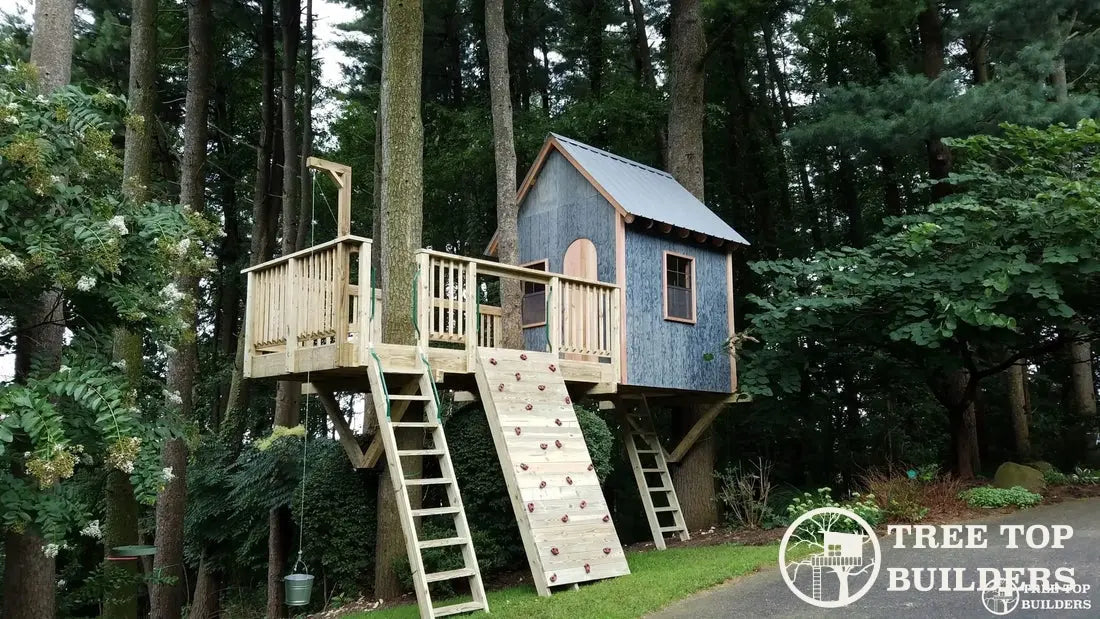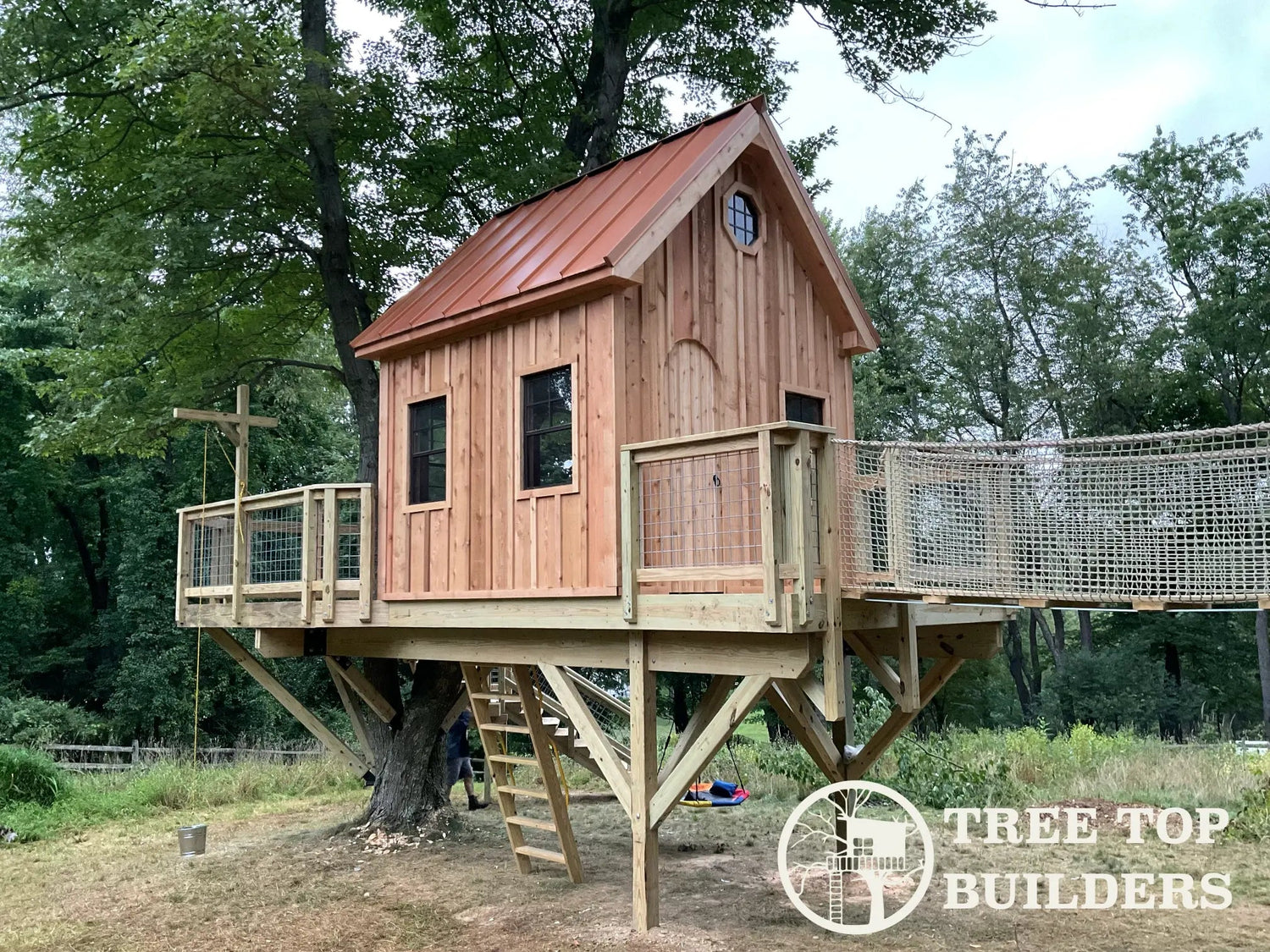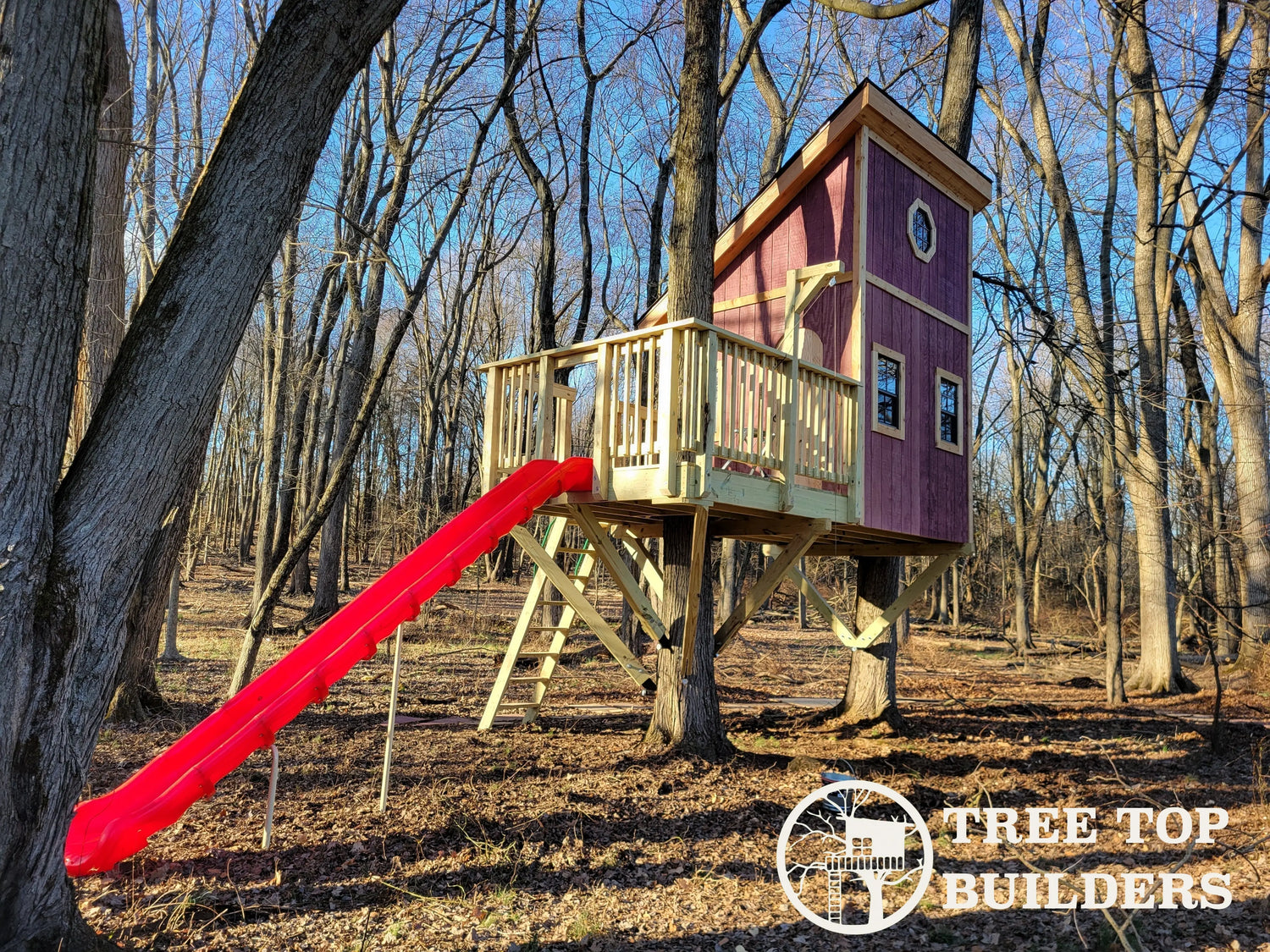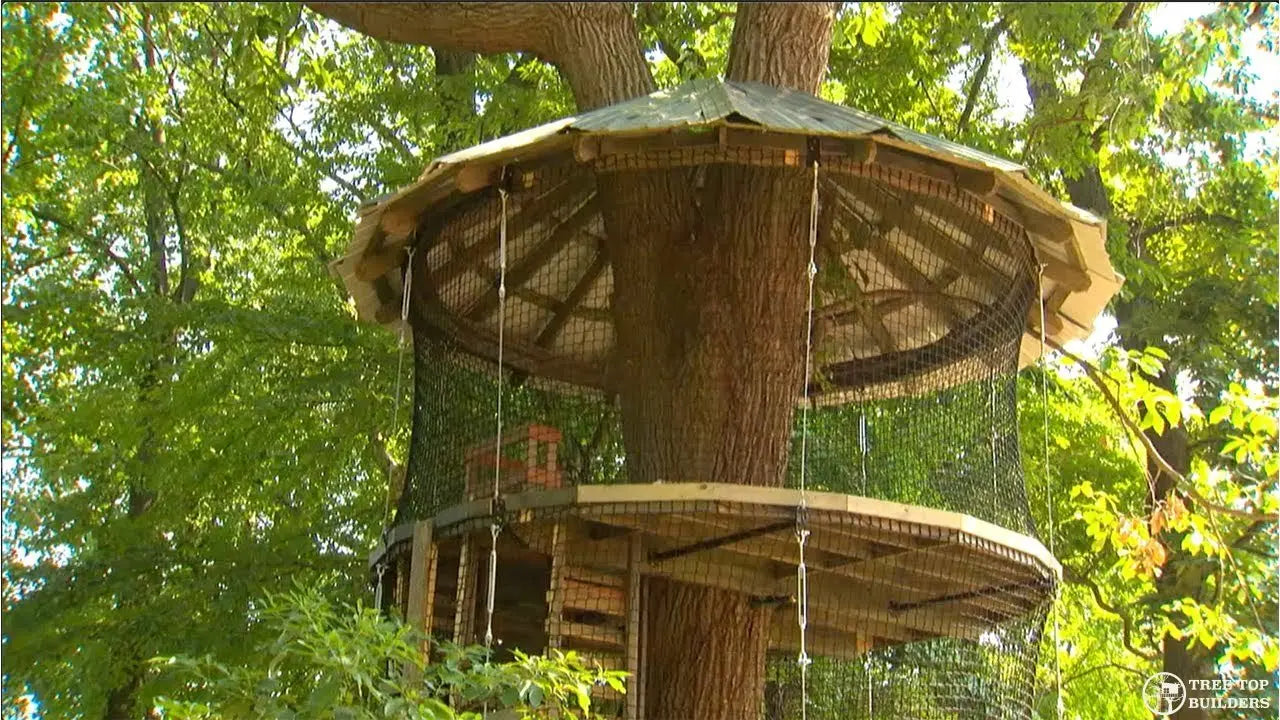
Whether to attach a Yurt Treehouse to Trees or Use Posts
Question From Peter: "I'm thinking of using 4-5 trees as supports for a 12' yurt platform. The platform would be only 1-2 feet up from the ground and placed on 2 (very) roughly parallel beams attached to 4 trees (each between 2 trees), with possibly a diagonal beam additionally attached to one of those trees and extending to a fifth tree (for center support).
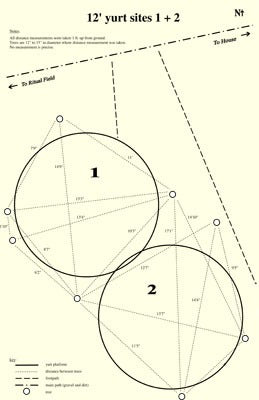
The distance between edge of platform and bark of tree would range from about 6 inches to 5 ft. (if there's a center beam) or 3 ft. (if there's not). I'm attaching a site diagram, for your reference. I believe the trees I would be using are pines. Their trunks are between 1 and 1.5 feet in diameter at 1 ft. above the ground, and they are very tall. It looks like their foliage is in the top third.
My questions are these: (3) 1. Would there be movement to worry about that close to the ground? If so, should I use fewer trees and partially support the platform from the ground? 2. Should I support the platform from the ground, regardless of how many trees I use? 3. While I am aware of hardware options, my preference is to use slings and/or lashings to attach the beams to the trees, with a layer underneath the straps to protect the bark. I would take down the yurt and platform on a yearly basis in order to adjust the straps, but otherwise, they would stay up year-round. When I'm gone from the site, I would remove the beams from the trees. Would this work? I'm aware there have been efforts to build treehouses without hardware, but can't seem to find info about this on the web."
Thanks for the questions, Peter, and I'll tell you what I think.
1. If I were you, I would place several buckets upside down around a sample tree in the stand where you will build the treehouse yurts. Then place small boards on top of the buckets so that they run tangentially to the tree around it and are only about a half inch from the bark. Then go out there on a windy day and watch/measure how much the trees move at 1 foot high. They will certainly move, but I don't believe they will move enough to affect your decision of what type of treehouse attachment to use. The principal is that the lower to the ground you are, the less the trees will move. However, what little movement they make becomes more difficult to stop due to leverage. Even if you theoretically could stop that movement, you might not want to because it will interfere with reactive root growth which strengthens the tree. Typically, I would use a floating bracket for attaching the treehouse to traditional fasteners like treehouse attachment bolts (TABs), but this is leading into your other questions.
2. If tree friendly construction is your primary goal, then you should consider using 100% ground support instead of attaching to the trees or using removable slings. The holes will damage some small roots, but with careful digging, this damage will be far less than penetrating fasteners. Either way, don't forget that foot traffic around the treehouse during and after construction is often a much greater threat than using penetrating fasteners. I'll also mention that you are diverting rainwater that would otherwise fall under the treehouse yurts and affecting where needles will build up over the years, but these issues are not as important as the above.
3. Some Japanese treehouse builders in the late 1990s did not want to penetrate the bark with fasteners, so they used large clamps. I understand that this practice has been found to do less short term damage, but more long term damage to the trees. Plus, it's hard to get the clamps tight enough not to slide down the tree under the dead load alone... If you are committed enough to sling and resling the trees every year, then it might work out for you that way. Several arboretums in the Philadelphia area have held treehouse building events in the past few years and all of them had rules about not penetrating the trees. In my opinion, some of the non-penetrating methods were more damaging to trees than our normal practice of penetrating. If you go this route, please spend the extra money to get larger, wider, tree saving slings. These will have a greater bearing surface on the bark and will be less likely to cause grooves under the sling. They will also have higher load ratings so they will last longer when left out in the rain & UV. The primary concern, in my mind is that you are making regular work for yourself this way that may not get done enough, or that the slings may do surface damage to the bark a little bit at a time, especially while being taken down and reset, regardless of how careful you are about it. Please leave a comment here after you consider all of your research and decide what to do. We'd also like to see a picture of your finished treehouse yurts!
Thanks, and happy treehouse building, -Dan Wright

